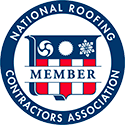We have previously mentioned some of the side effects of bad roofing ventilation and why it’s important to have roofing ventilation, and we want to touch on this point again. Many homes that are built have sub-optimal roofing natural ventilation systems because a lot of non-custom home builders either have general handymen and women (installers who are handy, but not roofing experts) install their roofs, or they subcontract to a cheap roofing contractor who is willing to cut corners to save the expense. The fact of the matter is, your roof ventilation acts as the lungs of your home. It controls cool air intake and helps expel warm, moist air from your home. This can help prevent a number of issues, including mold, dry rot, leak formation, and even some types of insect infestations. Home and business owners with properly installed roofing ventilation systems often pay less on their heating and cooling bills than homeowners with sub-optimal ventilation as well. Additionally, if mold grows in your attic, you can expose your family to a variety of health hazards as the mold exposed air is pushed throughout your home. It just makes sense to make sure your ventilation is where it should be.
There are several primary types of roofing ventilation we see used in the Salem area. These would be:
- Standard box vents (generally installed near the ridge, made of metal, and effective when a number of them are installed)
- Wind turbines (designed with grooves to catch wind, but generally only effective when installed in windy areas)
- Ridge vents (these are installed as the ridge cap of your roof, and when installed with soffit vents, can be part of a highly effective ventilation system)
- Soffit vents (these are installed in your roof’s soffits, if they are large enough, and they provide great ventilation surface area)
- Power vents (these are more expensive and therefore less common, but power vents can greatly reduce attic air temperatures)
The general rule of thumb is that there should be 1 sq. ft. of ventilation per 300 sq. ft. of attic space with vapor barrier installed, or 1 sq. ft. of ventilation per 150 sq. ft. of attic space without vapor barrier. Trust us, roofing ventilation isn’t the place you want to skimp and save money. When you are receiving estimates from Salem roofing companies for your roof replacement project, be sure to scrutinize their proposals. If one contractor comes in way under the others, you should be asking why. There are plenty of corners that could theoretically be cut to save a buck when it comes to installing a roof. In addition to the standard advice we give for hiring Salem roofers (asking for references, verifying license, bonding, and insurance, and checking prior work), we also recommend comparing the value you will be receiving. For example, if you have contractors recommending you install additional ventilation, but one contractor is cheaper, it’s possible they haven’t added ventilation to your estimate. This could mean one of a few things: either they’re less experienced and didn’t notice a problem, they don’t care about the longevity of your roof and just want to make a quick buck by hoping you’ll take the lowest bid, or it could just be an honest (but costly) mistake. Having roofing ventilation installed properly is an essential home improvement that will extend the life of your roof, protect your home, and could even decrease your heating and cooling bills.
If you are looking for a roof inspection, roof replacement, or a consultation on roofing insulation in Salem, give us a call at (503) 585-2338 and we will give you an estimate on your roofing project.







